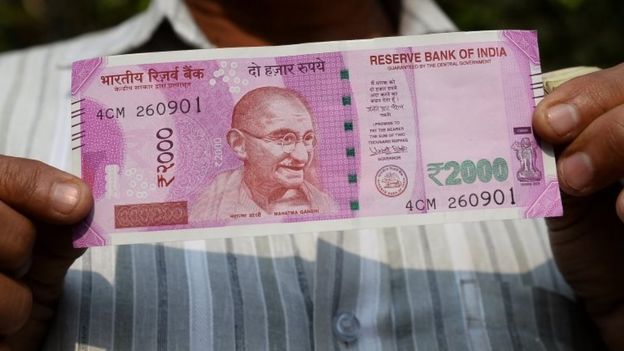Long queues continue outside banks and several ATMs have run out of cash in India, three days after 500 ($7) and 1,000 rupee notes were withdrawn as part of anti-corruption measures.
The BBC visited many ATMs of big banks in Delhi and Mumbai but found them either shut or not dispensing cash.
ATMs opened at midnight after being shut for 48 hours and hundreds queued up early morning to make withdrawals.
The surprise government move is aimed at tackling corruption and tax evasion.
But many low-income Indians, traders and ordinary savers who rely on the cash economy have been badly hit.
There are limits on cash withdrawals from ATMs and banks.
After Prime Minister Narendra Modi's surprise announcement on Tuesday night, the banks were closed on Wednesday.
Thousands of panicked Indians have been flocking to banks since they reopened on Thursday as the two notes accounted for about 85% of the cash in circulation.
Banks have extended working hours and deployed additional staff to deal with the rush.
Some bank officials said they had also brought in extra cash to deal with the situation.
How long have people got to change their old notes?
The 500 ($7; £6) and 1,000 ($15; £12) rupee notes are the highest denomination notes in the country and are extremely common in India. Airports, railway stations, hospitals and fuel stations will only accept them until the end of today.
People will be able to exchange their money at banks between 10 November and 30 December.
How much 'black money' is there in circulation?
The actual figure is unclear but correspondents say the issue of "black money" - which may have been acquired corruptly, or is being withheld from the tax authorities - is a huge problem. India's government hopes to flush out tax evaders and make money that is unaccounted for visible for tax purposes. There have been reports of tax raids in many parts of India.
 INDIAN GOVERNMENT
INDIAN GOVERNMENTIs there a limit on the amount an individual or household can cash in?
An individual can put as much as he or she likes into the bank - but withdrawals are limited so the banking system may end up being flooded with cash.
Government guidelines say it is possible to exchange up to 4,000 rupees per day up to 24 November - anything over this will be subject to tax laws. People can also withdraw up to 10,000 rupees from a bank per day and a maximum of 20,000 rupees per week.
Are the new notes safer?
New 2,000 and 500 rupee denomination notes with new security features are being given to people to replace those removed from circulation.
A new 1,000 rupee note "with a new dimension and design" will also be introduced in due course, a senior government official said on Thursday.
 AFP
AFPWhat will foreign tourists carrying the banknotes do?
They can purchase foreign exchange equivalent to 5,000 rupees using these bank notes at airport exchange counters until midnight on Friday.
No comments:
Post a Comment